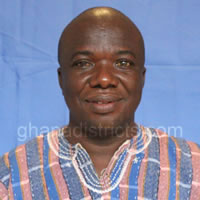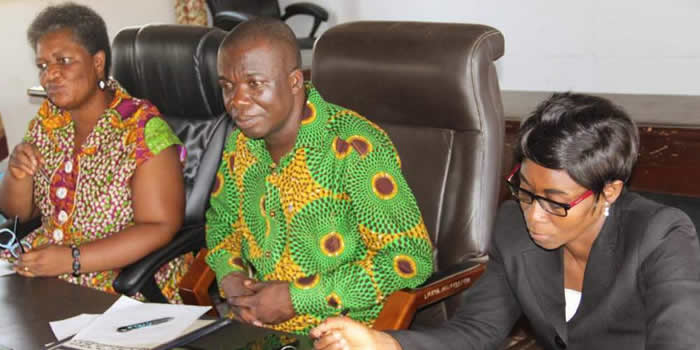

Growth and development cannot occur in any part of the world without good education. It is therefore, inappropriate to prepare a poverty reduction strategic plan for any district without assessing the current situation with regards to education Table 1.1c7 below shows the existing number of schools and their enrolment, as well as the number of teachers in Manya Krobo District.
While the numbers have not been properly assessed, there are a large number of children who do not attend school at all or who quickly drop out after Primary School that can be inferred by the large drop in enrolment numbers from Primary to Secondary schools.
In addition, many of the students who are enrolled do not attend full time, but are absent when their work is needed at home or on the farm. Another reason for low school participation rate is poor access to schools, especially in the rural areas. These problems are reflected in a District overall low school participation rate in the school age population.
It can be seen from Table 1.1c7 that as pupils move from Primary to SSS; the drop-out rate increases. Most pupils are unable to continue due to poverty. The number also reduces drastically from JSS to SSS contributing to a significant high school drop out rate. Also, some students, especially the brilliant ones, prefer to attend well-endowed schools in Accra, Cape Coast, Koforidua or other places.
It can also be inferred from Table 1.1c7 that at every level of education, the enrolment of girls is always less than boys. This confirms the low attention given to girl-child education and reflects a problem with low girl child enrolment.
The qualification of teachers who manage the school also contributes to the development of education in the country. It is realized from Table 1.1c7 that at the Nursery school level, the District only 48% of the 145 teachers trained. Untrained teachers handle most of the children. This affects the quality of their education foundation that the students deserve to build on. Table 19 shows the percentage of enrolment at each
level of education.
The pupil teacher ratio as seen in Table 1.1c7 is favourable as compared to the national standard of 1:40 and 1:35 for Primary and JSS respectively. However, that alone is not a guarantee for good performance. Other factors, such as the availability of teaching and learning instructions, also contribute to the general performance.
The survey of those who had any sort of education revealed that as many as 54% had Middle / JSS education. However, only 10.3% have had any secondary or senior level education. The tertiary level rate is very low (1.2%) This may be due to the high cost involved with this level of education.
As many as 8.1% of the adults with education surveyed stated that they benefited from the government adult literacy program. Meanwhile, there are a considerable number of people in the District who for one reason or another could not have access to any kind of education.
Key Development Problems in Education
The following are some of the key development issues in educational sector:
Administration
• Office Accommodation for the District Directorate of Education
• Residential accommodation for the |District Director of Education
• Youth Advisory centre
• Training of Health Committees
• Teachers Accommodation for deprived school
• Support for teachers in deprived areas
School Infrastructure
• Construction of 86NO. 2-Unit Pre-school Classroom with furniture
• Furniture for Care Givers at the Pr-School level
• In and Out door Playing facility for the Children
Basic and Secondary Education Needs
• 51 NO.3-Unit Classroom Blocks, Offices and Store including the furnishing of the classrooms
• 14nNO. 3-Unit Classroom Block Offices and Furniture
• 3NO. Administration Blocks
• Computer Laboratories and equipping them with computers for ICT Education
• 4NO. Assembly Halls
• 4NO. Dinning Halls
• Dormitories
• Kitchens
• eachers Bungalows
• Libraries
• Science Laboratories
• Home Economics Workshops
• Visual Arts Workshops
Skill and Enterprenurial Development for the Youth
The District has two vocational institutions. These are the Kpong Community Women Training Institute and Saint Anne’s Vocational Institute. The Department of Social Welfare manages the former institute, whilst the Catholic Church runs the latter. The main courses offered include catering dressmaking, tie and dye, batik making and home management practices. The problems associated with these schools are inadequate infrastructures and inadequate number of qualified teachers.
The Department of Social Welfare together with the Department of Community Development, are involved in providing vocational training to school drop outs and housewives in selected communities. For instance, with the last 3 years, about 35 young women have been given training in dressmaking, tie and die and batik making.
There are individual goldsmiths and bead makers who produce jewelry, ornaments and beads. Some of the youth in the District are engaged in apprenticeship programs in thee and other vocations such as carpentry, fitting and hairdressing. Through group discussions with some of the youth in the District, it came out clearly that there are three categories of youth that require support in vocational training.
These include those who are barely literate due to early dropout or inability to attend school, those who have completed a stage of formal education but are unemployed due to reasons of quality / relevance of education, and those who have acquired some skills, but need retraining, especially in good management practices, demanded in the labour market.
There will therefore be the need to target the appropriate categories of youth in designing skill development programmes in the District. At the moment, the departments of Social Welfare and Community Development are advancing in efforts in this direction as it is recognized that there is currently an inadequate level of support for the development of youth skills.
Date Created : 11/26/2017 2:41:36 PM












 facebook
facebook
 twitter
twitter
 Youtube
Youtube
 +233 593 831 280
+233 593 831 280 0800 430 430
0800 430 430 GPS: GE-231-4383
GPS: GE-231-4383 info@ghanadistricts.com
info@ghanadistricts.com Box GP1044, Accra, Ghana
Box GP1044, Accra, Ghana